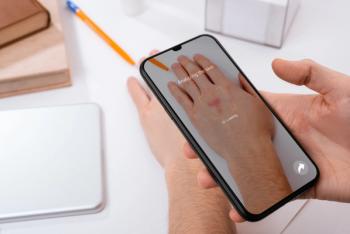
Study: Prevalence of Gram-Negative SSIs
Surgical site infections (SSIs) are a common adverse event after Mohs Micrographic Surgery, but researchers aimed to find out how the clinical features of gram-negative differ from their counterparts.
A poster presented at the 2022 American College of Mohs Surgery Annual Meeting, being held May 12 to 15, 2022 in Philadelphia, Pennsylvania, dove into the clinical features of surgical site infections (SSIs). SSIs are caused mostly by Staphylococcus aureus (S. aureus) and beta-hemolytic streptococci (b-hemolytic streptococci) and have signs of inflammation such as redness, heat, pain, swelling, and loss of function. However, investigators saw the need to research the clinical features of SSIs caused by gram-negative cocci.
A retrospective study, conducted from 2017-2021, investigated all patients who had Mohs Micrographic Surgery (MMS) wound closures at St. Louis University in Missouri. This information included clinical photos, patient history and comorbidities, surgery details, and follow up appointments. The symptoms and photos were used to characterize the wounds and include information on erythema, discharge, edema, and patient reported pain.
There were 3 separate groups created from this information:
- Patients with gram-positive culture results.
- Patients with gram-negative culture results.
- Patients with negative-culture results (baseline).
Overall, 676 wounds were included in the subsequent analysis, with 296 patients in the gram-positive group, 102 in the gram-negative group, and 277 in the baseline group. All 3 of the groups included slightly more than 50% female patients versus male patients.Over 80% of patients had diabetes.For those who were immunocomprised, there were 95.1%, 93.6%, and 94.6% in the gram-negative wound, gram-positive wounds, and baseline wounds respectively.
Those patients in the gram-negative group wounds had higher edema (OR 1.97, P= .004) and patient (OR 1.61, P= 0.4) than those in the baseline group but did not have a significant difference in erythema or discharge.
When comparing the gram-positive group to the gram-negative group, the gram-positive group’s wounds had more edema (OR 1.91, P= .0003), grade 2 erythema (OR 3.04, P = .02), and discharge (OR 1.76, P = 0.3).
With these differences in symptoms, it is important for dermatologic surgeons to be able to notice the clinical changes between these SSIs, the investigators wrote. Maintaining wound cultures in patients who may experience pain and/or edema in this population needs to be top of mind because of the absence of other classic features of infection, they added.
Reference
Hicks A, Chen E, Moody R, et al. Clinical characteristics of gram-negative surgical site infections in mohs micrographic surgery: a retrospective analysis. Presented at: American College of Mohs Surgery Annual Meeting; May 12-15, 2022; Philadelphia, Pennsylvania
Newsletter
Like what you’re reading? Subscribe to Dermatology Times for weekly updates on therapies, innovations, and real-world practice tips.


















